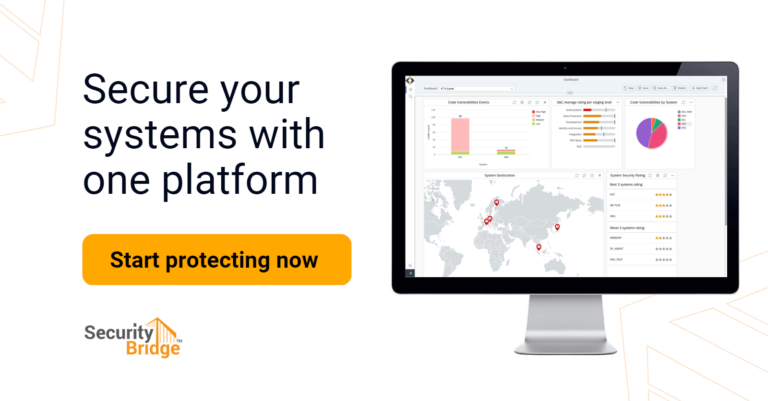
Safeguarding Data in Transit: Enhancing SAP Interface Security

Chapters
Share Article
Efficient business processes and supply chains rely on a digital backbone of highly integrated enterprise applications. Securing those applications is as important for business continuity as encrypting the exchanged data between those systems. Ensuring the safety of the data in transit is also a crucial aspect of maintaining the integrity of sensitive information.
Companies leveraging SAP as the core of their digital backbone typically connect it with other non-SAP systems. But also, the SAP landscape itself is not a single-box environment. Moreover, it contains multiple application instances that need to communicate with each other. Within this complex ecosystem, seamless communication between SAP applications and non-SAP systems is essential. Without encryption of this data in transit, the so-called “Man-in-the-Middle” attacks can easily occur, increasing the risk of unauthorized access and data breaches.
SAP Interface Architecture for Data in Transit
SAP provides multiple interfaces to facilitate communication between different systems and applications. These interfaces include SOAP (Simple Object Access Protocol), File, OData (Open Data Protocol), REST (Representational State Transfer), IDOC (Intermediate Document), WebAPIs, FTP (File Transfer Protocol), and many others. Each interface serves specific purposes and caters to different integration scenarios within the SAP ecosystem (Read more).
For these various interfaces, two transport protocols play a crucial role in data transfers in SAP environments: RFC (Remote Function Call) and HTTP (Hypertext Transfer Protocol).
RFC serves as the native communication protocol between SAP systems. It enables direct and efficient communication between SAP applications and allows for a seamless exchange of data and functionality. Additionally, non-SAP systems can also utilize RFC if supported or through middleware solutions like SAP PI/PO (Process Integration/Process Orchestration).
HTTP is commonly used for communication between SAP systems and non-SAP systems and for web-based interfaces. It provides a standard protocol for transmitting data over the internet and allows for interoperability between different systems. SAP interfaces utilizing REST, OData, WebAPIs, and other web-based protocols often rely on HTTP for data transport.
Protecting Data in Transit through Encrypted Communications
When you transmit data without encryption, it becomes susceptible to interception by malicious actors. Man-in-the-middle attacks, where an attacker secretly relays and alters the communication between two parties, are a significant threat. Encryption ensures that data transmitted between SAP systems and other endpoints remain unintelligible to unauthorized entities, making it imperative for safeguarding data integrity.
In our recent article, ‘5 TIPS TO ENSURE YOUR SAP INTERFACES ARE SECURE‘, we discussed best practices for securing SAP interfaces. But how can RFC and HTTP communications be protected?
SAP provides Secure Network Communications (SNC), which protects the data communication paths between the various client and server components of the SAP system that use the SAP protocols RFC or DIAG (for communication to the frontends). Multiple security products implement well-known cryptographic algorithms, which you can apply to your data with SNC to protect it.
HTTPS is the secure extension of HTTP used to encrypt data sent between a web server and a web browser. This encryption secures communications by using what’s known as an asymmetric public infrastructure. It helps to ensure that the transmitted data is secure and that third parties cannot intercept it.
Conclusion
Securing data in transit is a paramount concern within the SAP environment due to its intricate architecture and the need for intercommunication among various applications. Failing to encrypt data during transfer leaves it vulnerable to interception and compromise by malicious actors. Therefore, implementing encryption measures becomes critical for safeguarding the integrity and confidentiality of sensitive information.
Encryption is a vital tool to combat man-in-the-middle attacks and ensure the confidentiality and integrity of data in transit. Organizations should prioritize the implementation of encryption within their SAP interfaces, despite the additional effort involved. As a result, they can strengthen their overall security posture and mitigate the risk of unauthorized access and data breaches.

